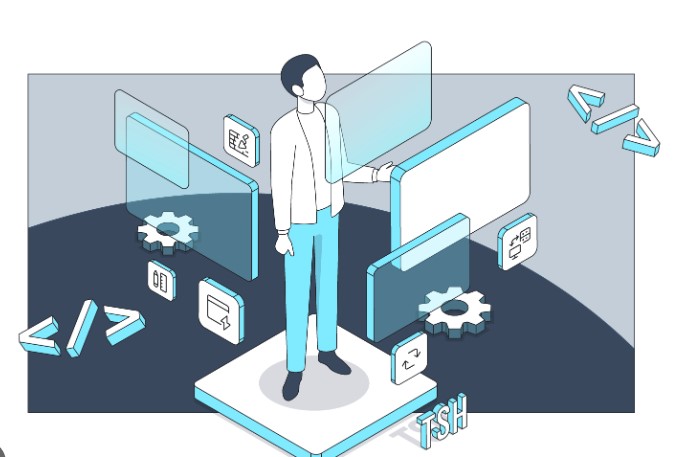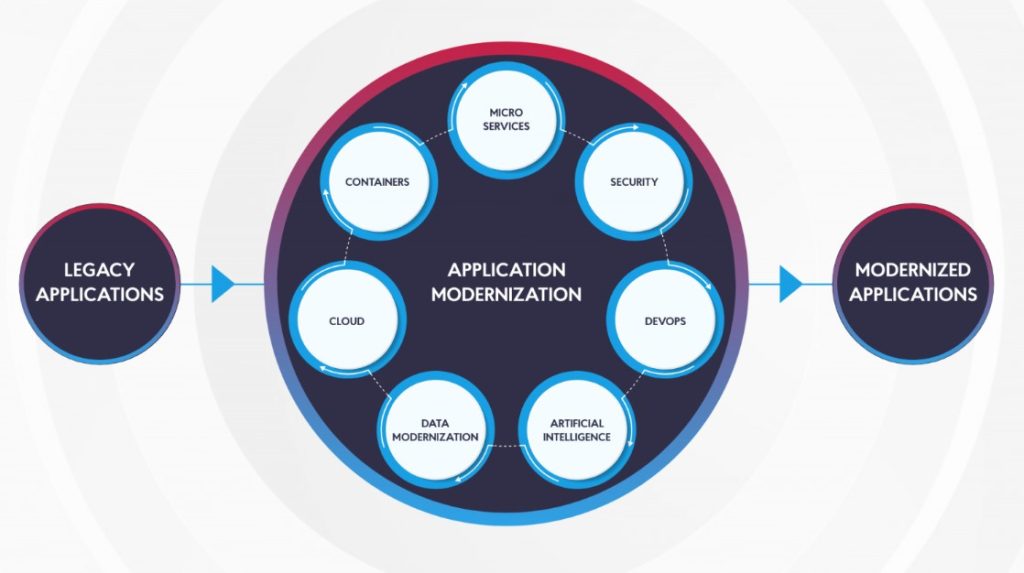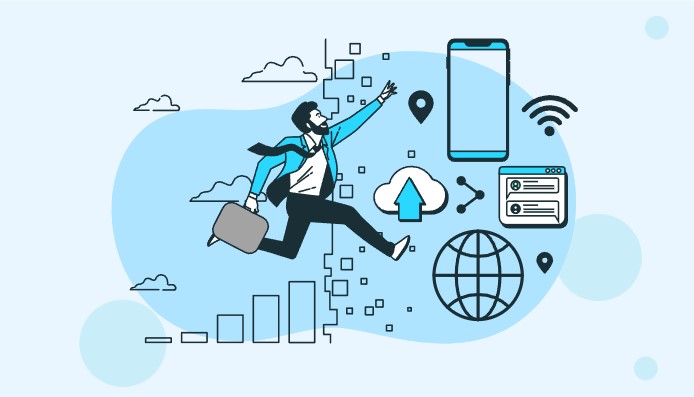In a digital world that never sleeps, one might say that outdated software does more than just snore—it practically comatose, becoming a roadblock to innovation and efficiency. Firms across industries grapple with the age-old question: how do we transform what we have without upending the whole applecart? Welcome to the enthralling narrative of legacy application modernization, a topic not just for tech aficionados, but also for business strategists. By the end of this piece, you will be well-versed in how to update your digital assets and why it’s crucial to keep them in prime condition.
The Allure of Legacy Systems
Don’t dismiss your existing systems just yet. Legacy systems have a nostalgic allure, standing as monuments to your company’s history. These systems often contain rich datasets and functionalities fine-tuned over years, making them indispensable for certain tasks. They’ve stood the test of time and served you well, but that doesn’t mean they can keep up with today’s fast-paced technological advancements.
However, sticking with these aging titans is like owning a classic car—you enjoy the ride, but the maintenance is expensive and time-consuming. A failure to adapt leaves companies vulnerable to security breaches and creates inefficiencies that no amount of manual workaround can fix. Here lies the essence of the application modernization strategy.
In short, your legacy systems are not garbage. They contain gems—features and data—that you’ll want to keep. You need a strategy that allows you to mine these treasures while casting aside the rest. This ensures that you not only survive, but thrive in a competitive landscape, pulling ahead with a sleek, modern setup without throwing the baby out with the bathwater.
Why Modernize?
Why should you bother modernizing? Isn’t it easier to stick with what you know? Interestingly, adhering to legacy systems can actually become more problematic as time progresses. The costs of maintaining outdated software can quickly snowball, not to mention the security vulnerabilities that come with using deprecated technology. The question isn’t if you should modernize, but rather, why modernize legacy systems in the first place?
Legacy system modernization isn’t just about keeping up with technological advancements; it’s a business imperative. From achieving regulatory compliance to accelerating time-to-market for new products and services, modernization acts as a catalyst for business goals. Plus, as the industry moves toward automation and data-driven decision-making, remaining stuck with old systems is akin to running a marathon with weights tied to your ankles. It’s a surefire way to fall behind.

The Financial Feasibility
Let’s talk money—everyone’s favorite subject. One might argue that the upfront costs of modernization could very well deter organizations from taking the leap. But have you considered the cost of not modernizing? Maintenance expenses for legacy systems are often sky-high, and they grow exponentially with time. It’s not just about fixing occasional bugs; it’s about the time and resources spent on making sure your outdated software is still operational.
This leads us to another important aspect—scalability. As your business grows, your applications should grow with it. Yet, scaling legacy systems often feels like you’re trying to fit a square peg into a round hole. They weren’t designed with current market demands in mind, which can lead to a tangled web of patchwork solutions. Conversely, a well-executed app modernization strategy can offer scalability with far less friction, accommodating your business’s evolving needs with grace.
The bottom line is simple. Modernization isn’t just an expense; it’s an investment—a strategic one. It provides long-term benefits that far outweigh the initial costs, positioning your enterprise for sustained success. That’s why legacy application modernization strategies are no longer optional, but necessary for businesses aiming for longevity and competitiveness.
Identifying Areas for Modernization
Before you jump headfirst into modernization, it’s crucial to identify which applications need a facelift and which are best left alone. You might consider doing an application portfolio assessment to evaluate the business value and technical condition of each application. The outcome can significantly influence your modernization strategy.
It’s not just about the application itself, but also the infrastructure it operates within. For instance, are your storage solutions, data centers, and networks up to date? Do they need to be modernized along with the application? Answering these questions helps you paint a clearer picture of the road ahead.
A comprehensive assessment provides an opportunity to prioritize applications that will have the most immediate and significant impact on your business. The end result is a roadmap that’s aligned not just with your technical requirements, but also with your strategic business goals. This brings us back to why a tailor-fit legacy app modernization process is pivotal—it serves as a bridge between the technological and the operational.
Choosing the Right Strategy
Ah, strategies! Where the rubber meets the road. When it comes to legacy application modernization, it’s not a one-size-fits-all scenario. Among the options are rehosting, re-platforming, refactoring, re-architecting, and even replacing. Each comes with its set of pros and cons, and the choice largely depends on your specific needs and limitations.
The rehosting strategy, often called “lift and shift,” is like moving your old furniture to a new house. It’s the least disruptive, but doesn’t take full advantage of modern architecture. Re-platforming involves a bit more tweaking, aiming to improve the system’s performance and efficiency without changing its core functionalities.
If you decide to go all out, re-architecting offers the opportunity to harness the full power of modern tech stacks. This could involve shifting from a monolithic architecture to a more flexible microservices model. While this requires substantial investment, the returns are often unparalleled, justifying the legacy application modernization strategies involved in such a transformation.

Engaging Stakeholders
You’re not on this journey alone. The decision to modernize impacts various stakeholders, from employees and executives to customers and partners. Therefore, engaging them in your application modernization strategy is a step you can’t afford to skip.
Proactively involve key stakeholders by educating them on the business advantages and potential roadblocks of modernization. Their input can often illuminate aspects you might have overlooked. Moreover, stakeholder engagement fosters a sense of collective ownership and responsibility, making the transition smoother.
If your modernization strategy necessitates significant workflow changes, educating and training the end-users—your employees—is crucial. Failing to do so can result in friction and reduced productivity, even if the new system is technically superior. Your legacy system modernization journey will likely include some bumps; hence, preparedness and training can go a long way in facilitating a smoother transformation.
Risks and Mitigation
Like any significant undertaking, modernization comes with its set of risks. Whether it’s budget overruns, delays, or failure to meet business objectives, being aware of these risks is half the battle. A well-thought-out legacy app modernization plan includes contingencies for these scenarios.
Prioritize the applications that are most critical to your business and consider a phased approach. This enables you to iron out any kinks in the system before you go all in. Remember, modernization is not a sprint; it’s a marathon that requires meticulous planning and execution.
Quality Assurance (QA) testing is your best friend in this journey. A robust testing phase can identify potential pitfalls before they become catastrophes, saving you time and resources in the long run. Consider employing automated testing tools to speed up this phase without compromising on quality.
Bringing in the Experts
Unless your organization has an extensive in-house IT department experienced in modernization, it’s worth considering bringing in external experts. The benefit here is twofold: not only do you get access to specialized knowledge, but it also frees up your internal resources to focus on their core competencies.
Expert consultancy can provide valuable insights into how to modernize legacy applications. These specialists can evaluate your existing infrastructure and provide tailored solutions, significantly lowering the risk associated with such a monumental task.
But be cautious when choosing your experts. Experience and proven track records are paramount. Consider their previous projects, industry reputation, and client testimonials when making your decision. In the best-case scenario, these consultants become an extension of your team, guiding you through the labyrinthine processes of modernization.
Keeping an Eye on Compliance
Compliance is not merely a box to be checked off; it’s a critical component of any modernization effort. Whether you’re beholden to regulations like GDPR for data protection or HIPAA for healthcare, ignoring compliance could mean risking financial penalties and irreparable damage to your reputation. Ensuring compliance should be part and parcel of your modernization strategy from day one.
One effective way to ensure compliance is to engage in continuous audits throughout the modernization process. This approach not only provides a safety net, but also instills a culture of compliance within the organization. It helps you identify any lapses early before they evolve into major issues, allowing for course correction in real-time.
With the constant updates and revisions to regulations, your modernized systems need to be agile enough to quickly adapt. Building compliance measures into the software itself can go a long way in facilitating this. Think of this as creating a “compliance layer” that can be updated independently of the main system.
Of course, being compliant is not a one-time task; it’s an ongoing obligation. Automated compliance management tools can significantly ease this burden by tracking changes in laws and automatically aligning your systems accordingly. These tools can be a valuable addition to your modernization toolkit, keeping you ahead of the compliance curve.

Measuring Success
Success in modernization is more than just completing a set of tasks; it’s about achieving predefined objectives that align with your business goals. Key Performance Indicators (KPIs) are indispensable for tracking these objectives. Whether you’re looking at Return on Investment (ROI), total cost of ownership, or customer satisfaction rates, KPIs provide you with a quantifiable measure of your modernization efforts.
Comparing these KPIs against industry benchmarks or your own historical data provides invaluable insights. This exercise can reveal if your modernization strategy is effective and where it needs fine-tuning. The comparisons become a dynamic dashboard, serving as both a report card and a strategic planning tool.
Moreover, the importance of qualitative measures should not be overlooked. While quantitative metrics like speed and uptime are essential, qualitative factors such as user experience and system reliability also play a critical role. These often-overlooked factors can make or break the success of your modernization strategy.
Lastly, the method of data collection and analysis for your KPIs shouldn’t be an afterthought. Whether you’re using in-built analytics tools, third-party services, or a combination of both, the key is to gather data that is both accurate and actionable. This ensures that your measures of success are both robust and adaptable, paving the way for informed future decisions.
Maintaining Momentum
The modernization process doesn’t end when your new systems go live; it’s a perpetual cycle of improvements. Often, organizations make the mistake of viewing modernization as a one-off project, failing to realize that technology and market demands are always evolving. Hence, keeping the momentum going should be an integral part of your long-term legacy application modernization strategy.
Allocating a budget for ongoing modernization is not just a smart move; it’s almost a necessity. These funds act as a safety net, allowing you to be nimble and adapt quickly when emerging technologies or shifts in market demand occur. It ensures that you are not just reacting to changes, but proactively staying ahead of them.
In addition to budgeting, continuous staff training is essential. As your systems evolve, so should the skills of the people operating them. Regular training programs and workshops can help your team adapt to new systems more readily, making the ongoing modernization process smoother and more efficient.
A future-facing modernization strategy also involves robust documentation. As you update and refine your systems, documentation serves as a vital roadmap. It outlines your processes, settings, and customizations, making it easier to implement changes or troubleshoot issues. In essence, good documentation ensures that your modernization efforts are both sustainable and scalable.
Future-Proofing
The concept of future-proofing moves beyond mere system upgrades to encompass a broader strategy that anticipates upcoming technological trends and market shifts. One way to achieve this is through making architectural choices that not only meet current needs, but also facilitate seamless updates and scalability. This ensures your systems can adapt, giving you a competitive edge.
Transitioning to cloud-based solutions is a popular method for future-proofing. Cloud architectures offer unparalleled flexibility, allowing for quick adoption of emerging technologies and easily scalable solutions. They enable organizations to be more agile, making system updates less of a chore and more of an ongoing strategic advantage.
In the realm of software, opting for open architectures can also significantly contribute to future-proofing efforts. Systems built on open standards are typically easier to integrate with other platforms, offering greater interoperability. This means that you can plug in new components or switch out old ones with minimal hassle.
But future-proofing isn’t just about technology; it’s also about building a culture of adaptability within your organization. Encourage a mindset that is always looking ahead, continually scanning the horizon for new trends or advancements that could be beneficial. Adopting such a culture ensures that you don’t just react to change; you anticipate it, making your modernization efforts far more resilient and long-lasting.